Dear Chicagoans,
Most of your alderpeople seem terribly frightened of the prospect of giving you choices.
They don’t want you to be allowed to vote on a ward map some of you helped shape for your own communities.
This isn’t democracy. It’s dictatorial darkness.
Why should you care? Ward maps matter. They help determine whether you get the help and resources your neighborhood needs for public safety, health care, mass transit, affordable housing, after-school options and plenty more.
Back in the fall of 2020, community groups and advocates began calling for an open, resident-centered ward remap process rather than the backroom wheeling and dealing previously led by Ald. Ed Burke that resulted in wards shaped like lobsters or spaghetti.
That was just the start. They and others advised my nonprofit, Change Illinois, as to how best to form an independent resident commission to draw a ward map that will last the next 10 years. An independent committee of community leaders considered 430 applications. They interviewed 43 applicants and chose 13 commissioners and alternates to serve.
Those 13 diverse commissioners were trained by experts on the ins and outs of drawing a fair and constitutional map. Community groups weighed in at every step and held mapping sessions in their communities, from Chinatown to Englewood, Austin to West Ridge, Pullman to Little Village, and many more. Last summer and fall, the Chicago Advisory Redistricting Commission hosted 41 trainings, community hearings and mapping sessions. Each was held at night or on a weekend so Chicagoans could have ample opportunity to participate. Each was live-streamed, transcribed and preserved on the commission’s website, chicagoswards.org. Major portions of that website are translatable in the city’s nine most common languages and translation services were offered at hearings to try to ensure anyone could participate. Drafts of maps were drawn, in public, with weeks built in for resident feedback. The commissioners listened to residents. They explained what they were drawing and why. Last Oct. 1, they approved The People’s Map. It prioritized keeping communities whole as much as possible. It contained the first-ever Asian majority ward around Chinatown and a total of 37 wards made up of a majority of minority residents.
What it did not include was re-election protection for incumbent council members.
While commissioners and community advocates sought council support for that map, the City Council’s Rules Committee began its remap hearings. Residents were given three minutes each to speak. Time and again, they were cut off mid-sentence, thanked and the next speaker was called upon. No one ever explained how the rules committee map was being drawn or why certain wards were being shaped a certain way. No one ever explained to residents why their requests to keep a neighborhood whole was, or was not, going to be met. Then, one day, out of a back map room somewhere in City Hall, a map emerged and 33 alderpeople supported it.
After three months of trying and failing to win support for The People’s Map, commissioners shifted to developing a list of priorities from listening to people and shared them with all the council caucuses, asking that some of the people’s needs be incorporated into their ward maps. A coalition of 15 alderpeople agreed to include some of those priorities, for instance, keeping Greater Englewood in fewer wards, and keeping the Austin business corridor and community together.
But to date, the 33 alderpeople supporting Ald. Michelle Harris’ map are blocking from the ballot the one map that contains provisions regular people in Chicago wanted.
They can unblock that map if a simple majority votes to approve any ward map at a council meeting before May 19. Then, legally, the clock would reset and the improved map that includes some of what Chicago residents asked for could get on the June 28 ballot, along with the map 33 of them support.
Shouldn’t you have a chance to choose from among the best maps? Shouldn’t Chicagoans be allowed to be a part of shaping their own communities for the next 10 years?
Community groups and caring residents worked hard and long over many months to show a better way exists to draw our democracies’ foundations. So far, a council majority has resorted to the same old backroom darkness. Isn’t a little light what’s right? The majority should vote to approve a map. If they do, you’d get to choose between theirs and the only one residents helped shape. That would be fair, open government by the people and for the people.
Madeleine Doubek is executive director of Change Illinois, a nonpartisan nonprofit that advocates for ethical and efficient government.
This article originally appeared on Crain’s Chicago Business.
